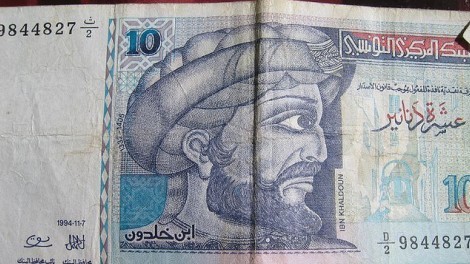Iraqi Dinar Can Comparables Guide Investment (iqd vnd egp kwd)
Post on: 2 Июнь, 2015 No Comment

Analysts debate whether the Iraqi Dinar (IQD) is a good investment and about the factors which can change the currency’s fortunes. Those who see the dinar (IQD ) as a good investment compare it to the Kuwaiti dinar. the Vietnamese dong. and the Egyptian pound (and even European currencies in the post-World War II era) to convince common investors that now is the time to act. To assess these claims, this article will look at the dinar’s past performance, the existing geo-political situation, any commonalities that exist between the Iraqi dinar and the currencies mentioned above and the future development potential of those related currencies.
Kuwaiti dinar
The Iraqi dinar is frequently compared to the Kuwaiti dinar (KWD ). A lot of common features exist between Iraq and Kuwait. They are geographical neighbors, have oil rich economies, were enemies in the past, and have very similar societies. These similarities are used to promote claims that we may expect similar performance (after an Iraqi dinar revaluation) between the two currencies. Keeping our focus on the Gulf War and its aftermath, let’s look at the evolution of the Kuwaiti currency.
The myth of a revalued Iraqi dinar is dispelled here. There was neither any revaluation nor redenomination of the Kuwaiti dinar after the Gulf War. When Iraq invaded Kuwait in 1990, it made the Iraqi dinar the official currency of Kuwait during the occupation. A large number of original Kuwaiti bank notes were stolen by Iraqi forces. After liberation, the Kuwaiti dinar was once again established as the official currency of the country; however, officials were concerned about the misuse of large sums of looted Kuwaiti bank notes that were taken by the Iraqi invaders. To prevent misuse and any impact on the Kuwaiti economy, the government of Kuwait issued new Kuwaiti dinar bank notes. retaining the pre-war forex rates.
After the Iraqi invasion in 1990, Kuwait’s efforts to diversify its economy came to a halt. The war forced hundreds of business establishments (including foreign companies) to shift their base of operations to Dubai, Bahrain and other stable, neighboring cities. Reportedly, 700 Kuwaiti oil wells were set on fire during the war, causing 6 million barrels of oil to be lost each day.
But Kuwait was able to re-establish itself in the post-war era. An important reason Kuwait was able to quickly recover from the war was the backing of 34 allied countries led by the U.S. The international response, including timely assistance from global organizations like the World Bank and the IMF also facilitated Kuwait’s quick recovery.
Unfortunately, the loser, Iraq, ended up suffering from strict sanctions on its economy. Moreover, the war only lasted seven months in Kuwait, while Iraq continues to struggle after twenty-one years. The commonalities between the two countries, although promoted to support the case for the Iraqi dinar, don’t realistically apply to the economic situation of the two countries. Iraq’s current situation does not resemble a foreign invasion (like in Kuwait’s case); it is rather an internal conflict which may lead to factions ruling different parts of country. Yes, it does have the potential to come back to path of recovery based on several factors. but how long will it take remains uncertain. Making any financial investments in Iraq (including in the dinar) would be a long shot.
Egyptian Pound
Egypt’s 2011 revolution has prompted analysts to compare it to Iraq. Boosters of the Iraqi dinar cite the relative stability of the Egyptian pound (EGP ) in the post-revolution era. They claim that similar upheavals are taking place in Iraq and that the Iraqi dinar will also stabilize like the Egyptian pound has done since the revolution. But that’s not the full story.
The Egyptian revolution of 2011 precipitated a political, social and security crisis that continues to haunt the country and the economy. It created high budget deficits, debt, unemployment, poverty and above all high inflation. EGP-USD forex rates also declined significantly. In February 2011 when President Mubarak had to step down following the revolution, the exchange rate was around 5.85 EGP to the US dollar. As of September 2014, the US dollar buys 7.2 Egyptian pounds, a significant decline of around 23%. Egypt’s USD reserves were around 36 billion USD and have come down to 16.7 billion USD during the same period. Domestic businesses have been particularly hard hit by the currency’s loss of value. In reality, there has been no improvement or stability in Egyptian pound forex rates since the revolution.
The current crisis in Egypt is political, cultural and perhaps religious, but it is not as contentious as the conflict in Iraq where two major ethnicities, Mesopotamian Arabs and Kurds, and two major faiths of Islam, Sunnis and Shiites, threaten to dissolve the legal and physical boundaries of the Iraqi state.
Additionally, the Egyptian pound follows a managed float regime where exchange rates fluctuate in the open market, but are tightly controlled by the central bank. This is achieved by the central bank buying and selling currency in the amounts required to keep the rate within a tight range. By imposing regulations on its currency, restricting its flow outside the country, banning currency trades within the country, fixing exchange rates and limiting transactions through authorized exchanges only, currency controls create a parallel unauthorized forex market (or “black market”), which further distorts currency trading and the exchange rate.
A significant portion of Egyptians work abroad and remit foreign currency back to Egypt legally. Because tourism is one of the biggest sectors of the Egyptian economy, tourists bring in a significant amount of foreign currency as well. Due to recent geo-political situation, however, the tourism sector has taken a hit, though the situation could be worse.
Fortunately, Egypt’s problems are not as severe as Iraq’s. The 2011 revolution was against a regime, not an ethnic civil war that could split the country. Indeed, there are many positives for the Egyptian economy and currency. Despite its current challenges, Egypt continues to have little external debt. which stands at 87.1% of GDP. With the new government continuously attempting to bring in the much needed reforms, sooner or later the business confidence and economy is expected to revive. This current uncertain phase may continue for some time, but the overall framework, system and institutions continue to work despite political challenges. The Egyptian pound is on a far better footing than Iraqi dinar in terms of all geo-political and economic factors.

Vietnamese dong
During the war period (1954 to 1975), Vietnam was split and used different currencies: the North Vietnamese and South Vietnamese dong. The economic ideologies in the two countries were also different. North Vietnam pursued a communist, planned economy and South Vietnam was nominally capitalist. Unfortunately, the war took a toll on both regions. South Vietnam, despite foreign aid from the United States, could not sustain the costs and repercussions of the war, and the communist North suffered as much or more.
The unification of North and South Vietnam created a standard, unified currency in 1978. The post-war situation of the unified Vietnam was dismal, not just due to the suffering caused by military and civilian deaths, but also due to the mass exodus of refugees including skilled workers, professionals and intellectuals that left crippling vacancies in the Vietnamese economy. It was only in 1986, almost 11 years after the war that Vietnam managed to officially launch its economic renewal program called Doi Moi. This program was aimed at establishing free-market economic planning. thereby encouraging establishment of private businesses in the production sector, as well as attracting foreign investments by allowing foreign-owned enterprises. By 1990, the results of reform started to appear: more than 30,000 businesses were successfully established, the GDP growth rate stabilized at 7% and poverty declined from 50% to 29%.
The simple truth is that war has a long-lasting negative effect on country’s economy and its future prospects. Though the Vietnamese dong is cited today as one of the region’s stable currencies with significant growth potential, it has had its fair share of post-war turmoil.
Beyond the KWD, EGP and VND
Comparisons are also sometimes drawn between the Iraqi dinar and European currencies after the World War II. These comparisons are wholly specious. In the middle twentieth century, a single European currency was thought to be a way to end national wars, and all parties to the agreement (notably, France and Germany) wished to put violence behind them for good. This is certainly not the situation for the many hostile groups in Iraq.
The Bottom Line
Both Kuwait and Vietnam enjoyed support provided by partner countries and global organizations like World Bank and IMF, which assisted them on the path to recovery. Unless we see similar participation by influential countries and global organizations, Iraq’s poor situation may continue or even deteriorate. Egypt’s civil unrest appears similar to Iraq’s, but in fact, Iraq’s problems are more intractable than Egypt’s. If Iraq solves its political problems – not the least of which is the growth of the Islamic State in Syria and Iraq – it may have the natural resources to fund a growing economy. But that if is many years from now. An investment in the Iraqi dinar is a long term bet that should follow an “invest and forget” strategy.














